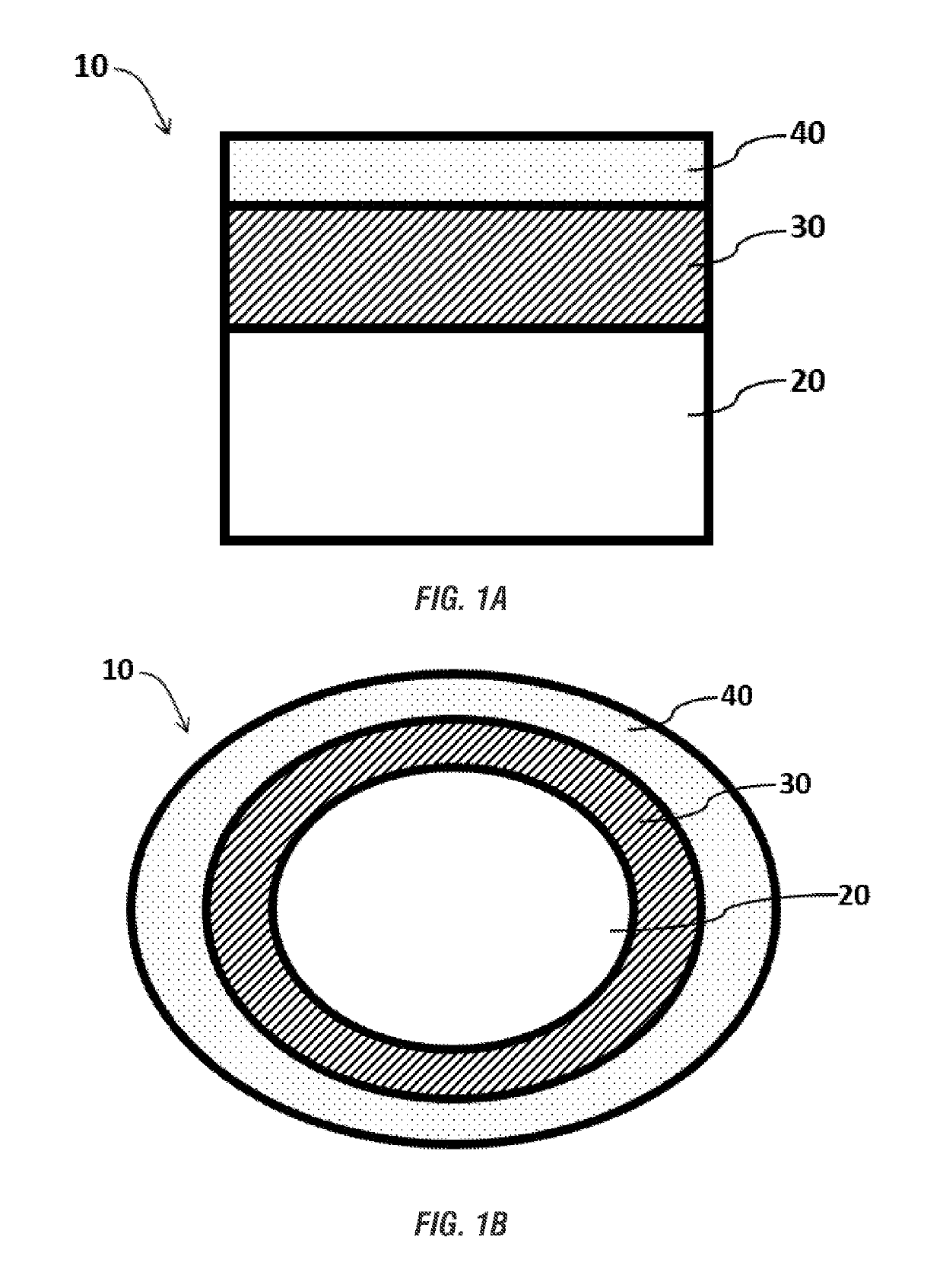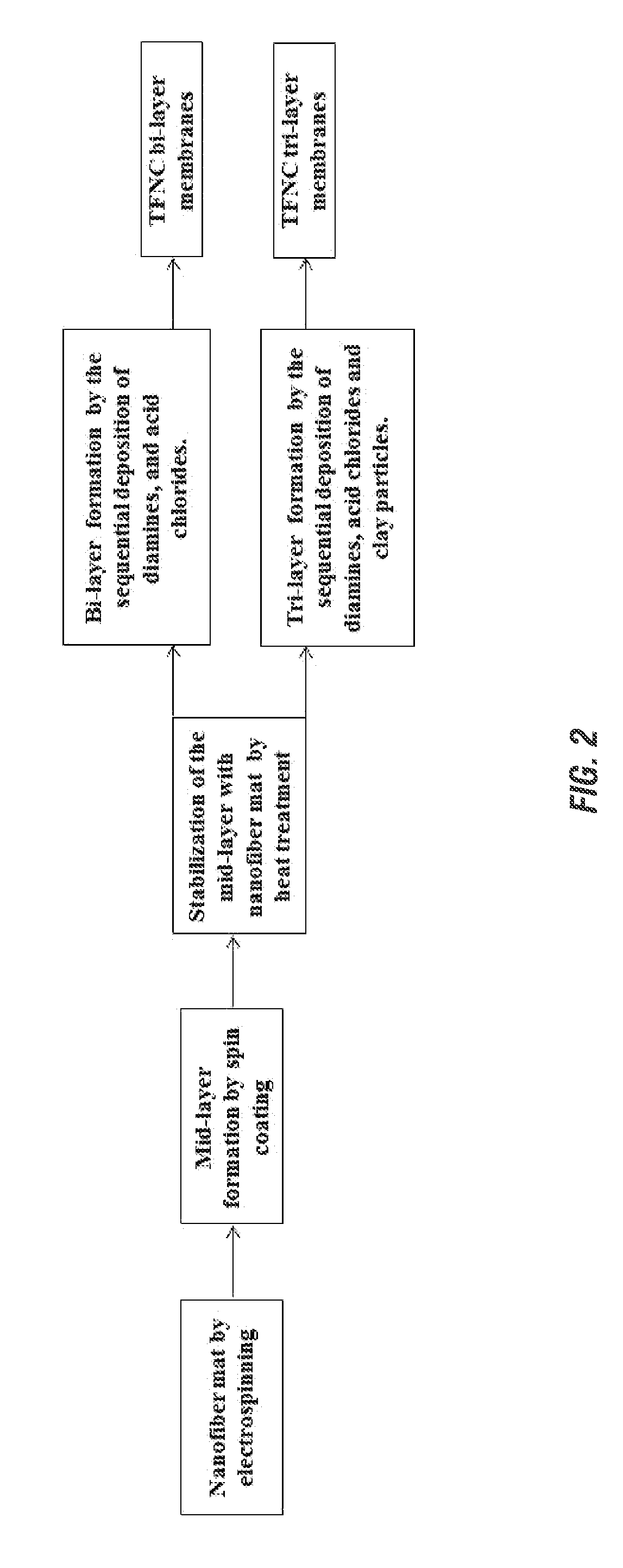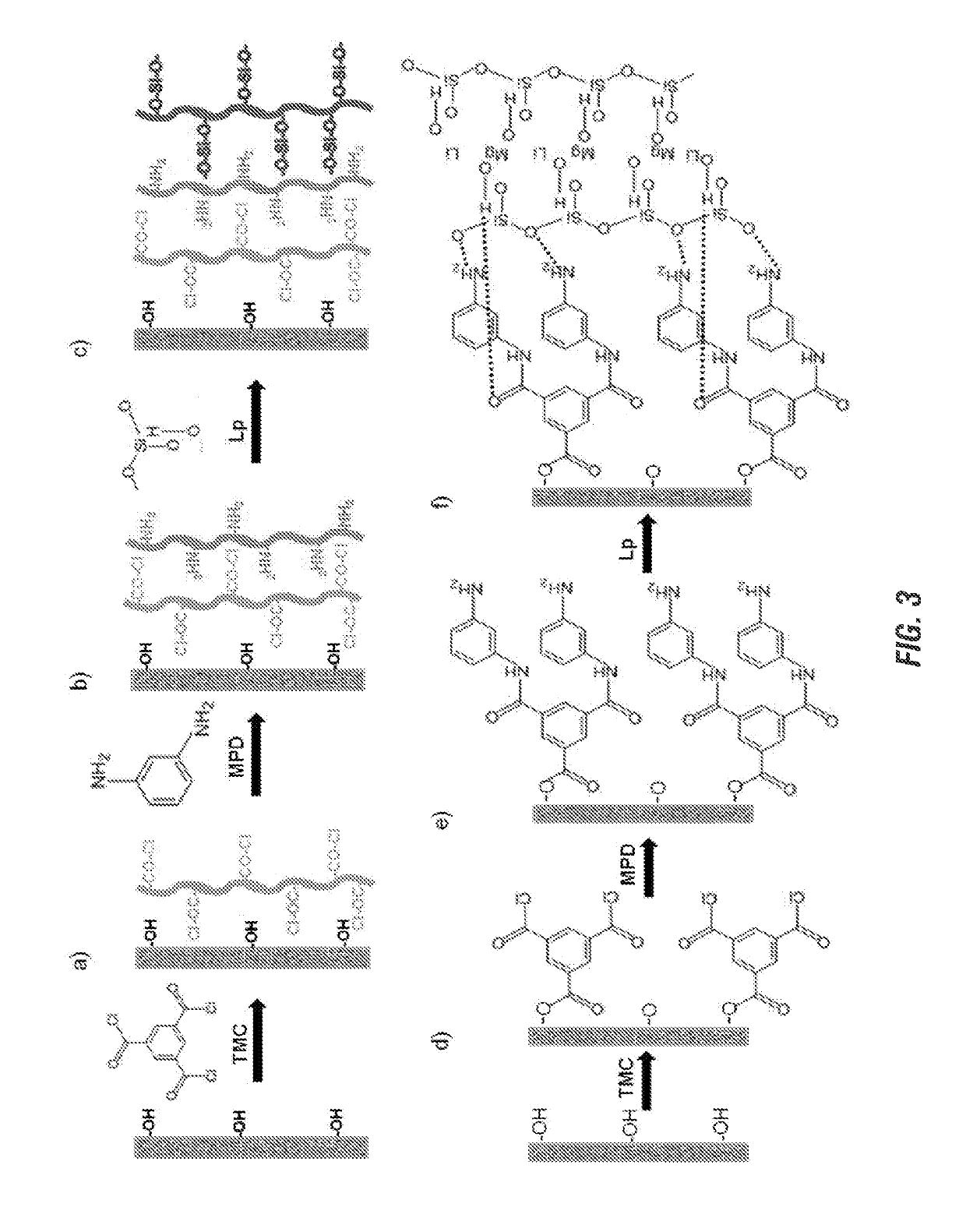Multilayer thin film nanocomposite membranes prepared by molecular layer-by-layer assembly
a thin film, layer-by-layer technology, applied in the field of thin film nanocomposite membranes, can solve the problems of high fouling and inconsistent performance, increased energy cost and mechanical breakage of the membrane during operation, and easy chlorine attack
- Summary
- Abstract
- Description
- Claims
- Application Information
AI Technical Summary
Benefits of technology
Problems solved by technology
Method used
Image
Examples
example 1
Preparation of Thin Film Nanocomposites
[0094]TFNC nanofiber membranes were prepared according to the exemplary methods shown in FIG. 4 (bilayer) and FIG. 5 (trilayer). The following description describes the components and processes used in performing the methods of FIGS. 4 and 5 and are not limiting. The porous nanofiberous support was prepared by electrospinning. A 10 wt. % PAN solution in DMF was prepared first. Subsequently, the solution was filled in a 30 mL BD Luer-Lok tip plastic syringe having a stainless-steel needle with 18 gauge 90° blunt end. The electrospinning setup included a high voltage power supply (Gamma High Voltage Research, Inc., Ormond Beach, Fla.) and a laboratory-produced roller with diameter of 25 cm. During electrospinning, a positive DC high voltage of 16 kV was applied to the needle that was placed 25 cm away from the surface of roller. The roller was covered with aluminum foil, and the rotational speed during electrospinning was set at 100 rpm. The flow...
example 2
Separation Performance of Thin Film Nanocomposite Membranes
[0105]The separation performances of the TFNC nanofiber membranes were evaluated in dead end filtration mode at an applied pressure of 10 bar. The water flux and salt rejection values of the TFNC trilayer membranes reported in FIG. 11 varied significantly as a function of trilayer number. These membranes exhibited a water flux of 44.5 Lm−2h−1 with 3 trilayers, which decreased to 25.8 Lm−2h−1 with 6 trilayers of TMC / MPD / Lp. However as shown in FIG. 12, with the increase of trilayer number, steady increase in the rejection of divalent MgCl2 and monovalent NaCl were observed. TFNC nanofiber membranes modified with 6 trilayers showed a MgCl2 rejection of 99.1% and NaCl rejection of 89.8%.
[0106]This decrease in water flux and increase in salt rejection could be justified by the enhancement of polymer concentration on the nanofiber mat surface with an increase in trilayer number. Upon comparison with the separation performance of ...
PUM
| Property | Measurement | Unit |
|---|---|---|
| time | aaaaa | aaaaa |
| time | aaaaa | aaaaa |
| porosity | aaaaa | aaaaa |
Abstract
Description
Claims
Application Information
 Login to View More
Login to View More - R&D
- Intellectual Property
- Life Sciences
- Materials
- Tech Scout
- Unparalleled Data Quality
- Higher Quality Content
- 60% Fewer Hallucinations
Browse by: Latest US Patents, China's latest patents, Technical Efficacy Thesaurus, Application Domain, Technology Topic, Popular Technical Reports.
© 2025 PatSnap. All rights reserved.Legal|Privacy policy|Modern Slavery Act Transparency Statement|Sitemap|About US| Contact US: help@patsnap.com



